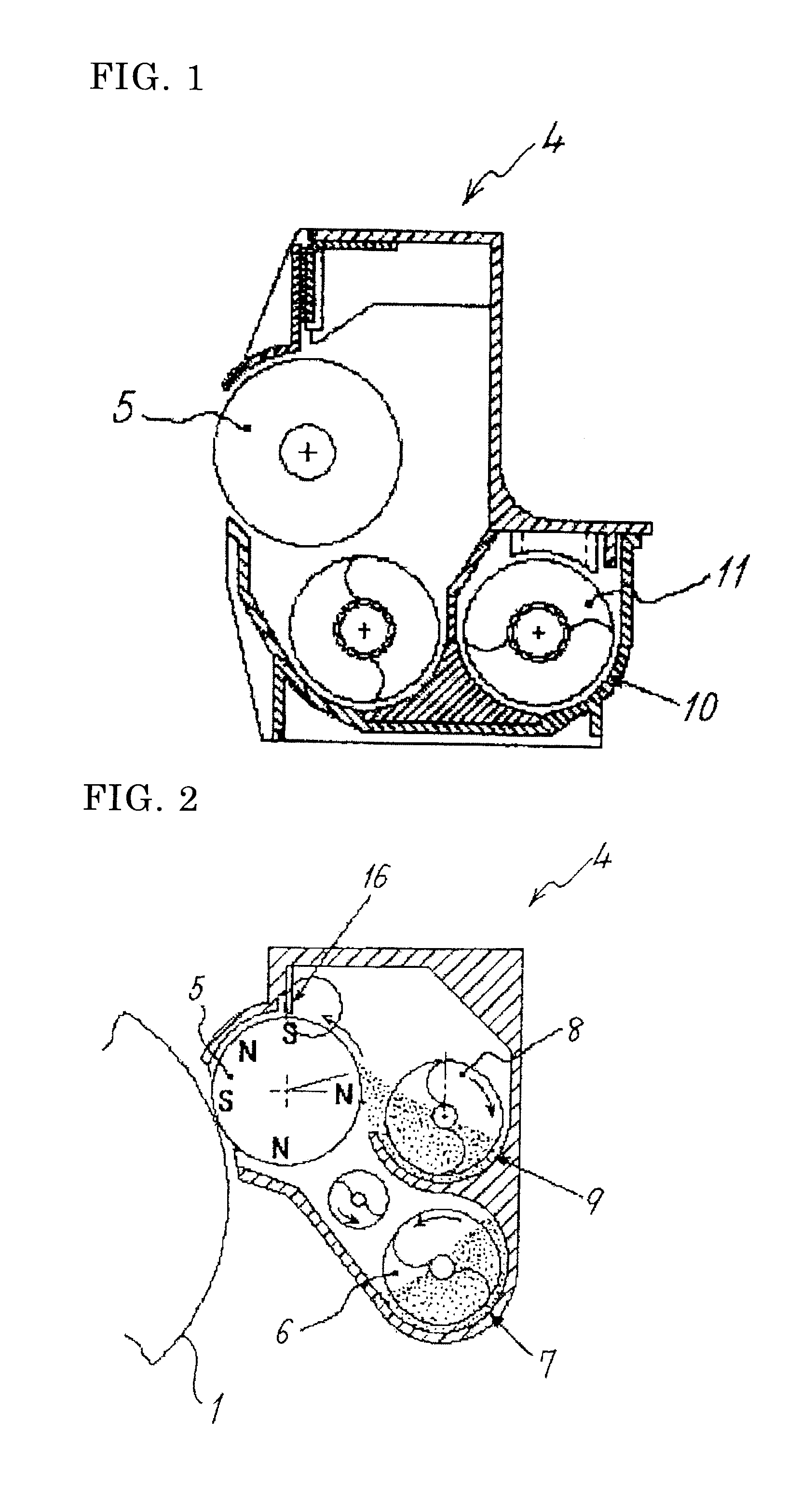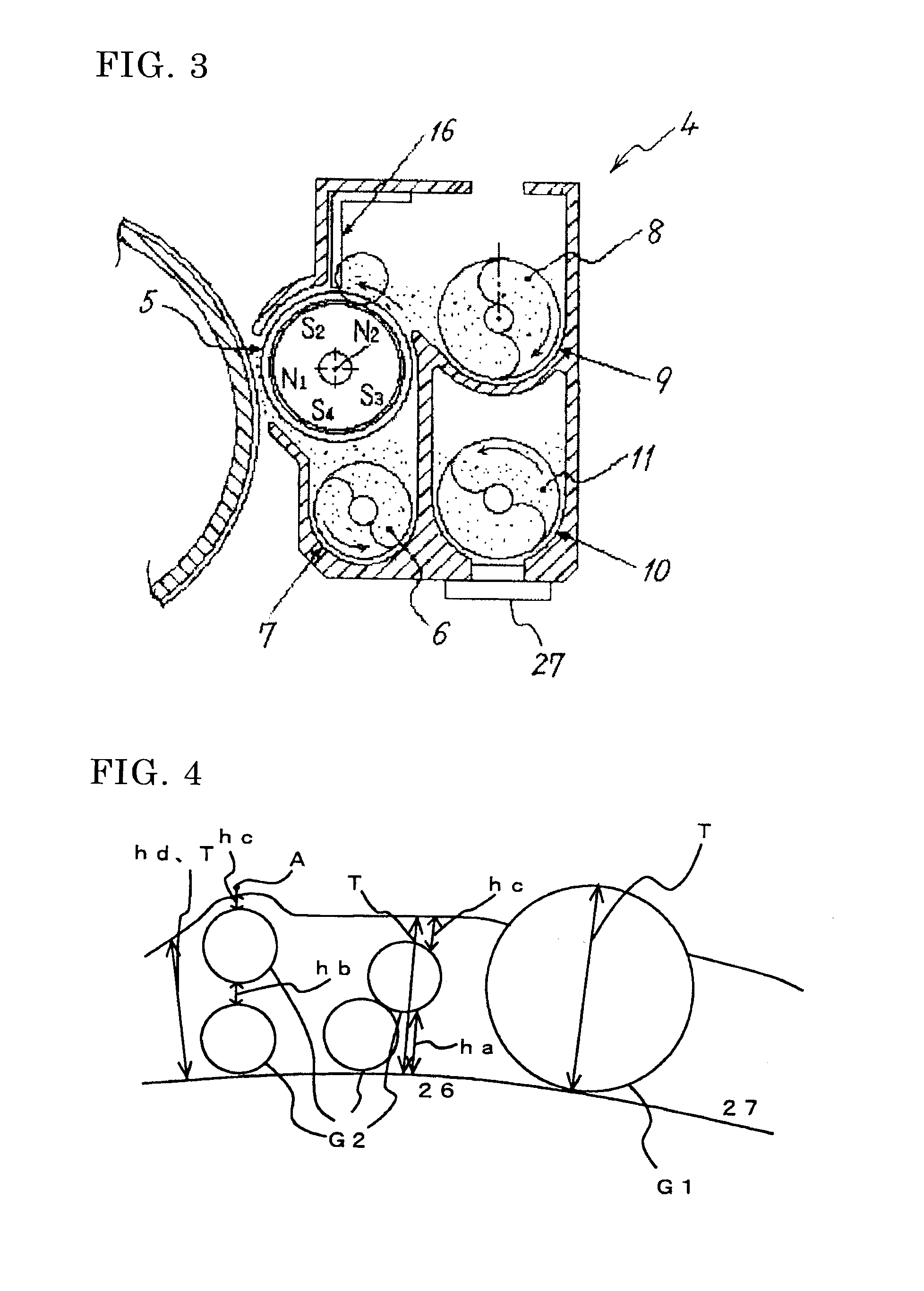Carrier for electrophotographic developer, image forming method, and process cartridge
a technology for electrophotographic developers and carriers, applied in the field of carriers for electrophotographic developers, can solve the problems of excessive increase of development properties of developers, degraded carrier adhesion of carriers that are stirred with toners within developing containers, and increase in image density, so as to reduce image density, increase charge amount, and prevent carrier adhesion
- Summary
- Abstract
- Description
- Claims
- Application Information
AI Technical Summary
Benefits of technology
Problems solved by technology
Method used
Image
Examples
synthesis example 1
of Binder Resin
[0342]Seven hundred and twenty-four parts of an adduct of bisphenol A with 2 moles of ethylene oxide, 276 parts of isophthalic acid, and 2 parts of dibutyltin oxide were poured into a reactor vessel equipped with a condenser, a stirrer and a nitrogen gas inlet, and the mixture was allowed to react at 230° C. for 8 hours under normal pressure, then was further allowed to react under a reduced pressure of 10 to 15 mmHg for 5 hours, followed by cooling to 160° C.; 32 parts of phthalic anhydride was then added to the reactant and the mixture was allowed to react for 2 hours.
[0343]The reactant was then cooled to 80° C., which was allowed to react with 188 parts of isophorone diisocyanate in ethyl acetate for 2 hours to prepare an isocyanate-containing prepolymer P1.
[0344]Then 267 parts of the prepolymer P1 and 14 parts of isophorone diamine were allowed to react at 50° C. for 2 hours, thereby to prepare a urea-modified polyester U1 having a mass average molecular mass of 6...
preparation example 1
of Master Batch
[0350]
pigment: C.I. Pigment Yellow 15540 partsbinder resin: polyester resin A60 partswater30 parts
[0351]The ingredients described above were mixed in a Henschel mixer to prepare a mixture containing pigment agglomerate to which water being immersed. The mixture was kneaded for 45 minutes by twin rolls of which the surface temperature was set to be 130° C., then was milled by a pulvelizer into a size of about 1 mm Φ to prepare a master batch M1.
Toner Production Example A
[0352]Into a beaker, 240 parts of the solution of the binder resin B1 in ethyl acetate and MEK, 20 parts of pentaerythritol tetrabehenate (melting point: 81° C., melt viscosity: 25 cps), and 8 parts of the master batch M1 were introduced, then the mixture was stirred at 60° C. and 12,000 rpm by a TK-type homomixer to dissolve and disperse uniformly to prepare a toner ingredient liquid.
[0353]Into a beaker, 706 parts of deionized water, 294 parts of hydroxyapatite 10% suspension (Supertite 10, by Nippon C...
production example 1
[0367]
acrylic resin solution *1)2,130partsaminosilane *2)4partsconductive fine particle “a”1,500partstoluene6,000parts*1) solid content: 50% by mass*2) solid content: 100% by mass
[0368]The ingredients described above were dispersed for 10 minutes by a homomixer to prepare a liquid for forming resin layer. A ferrite particle having a volume average particle diameter of 35 μm was used as the core material of carrier, the resin solution described above was coated on the surface of the core material by use of Spira Coater (by Okada Seiko K. K.) under an atmosphere of 55° C. in a velocity of 30 g / min and dried so as to adjust the thickness “h” to 0.15 μm. The thickness of the layer was adjusted by the velocity of the liquid. The resulting carrier was calcined in an electric furnace at 150° C. for 1 hour, and was broken up using a screen of opening 100 μm after cooling, thereby to prepare a carrier I. The average thickness T was 0.20 μm.
[0369]The volume average particle diameter of the co...
PUM
 Login to View More
Login to View More Abstract
Description
Claims
Application Information
 Login to View More
Login to View More - R&D
- Intellectual Property
- Life Sciences
- Materials
- Tech Scout
- Unparalleled Data Quality
- Higher Quality Content
- 60% Fewer Hallucinations
Browse by: Latest US Patents, China's latest patents, Technical Efficacy Thesaurus, Application Domain, Technology Topic, Popular Technical Reports.
© 2025 PatSnap. All rights reserved.Legal|Privacy policy|Modern Slavery Act Transparency Statement|Sitemap|About US| Contact US: help@patsnap.com



